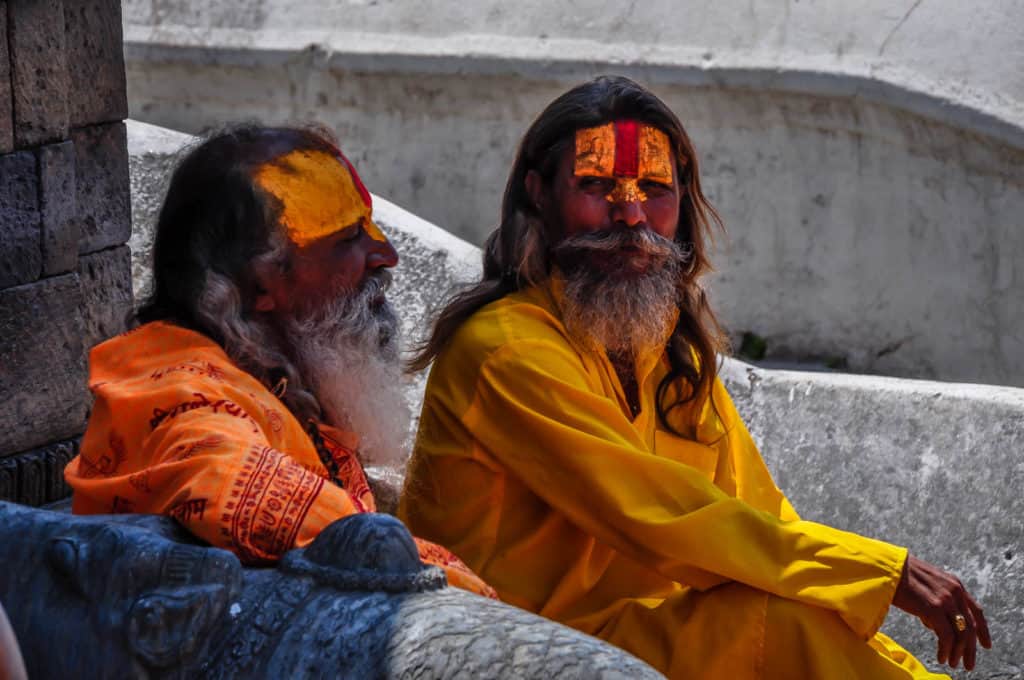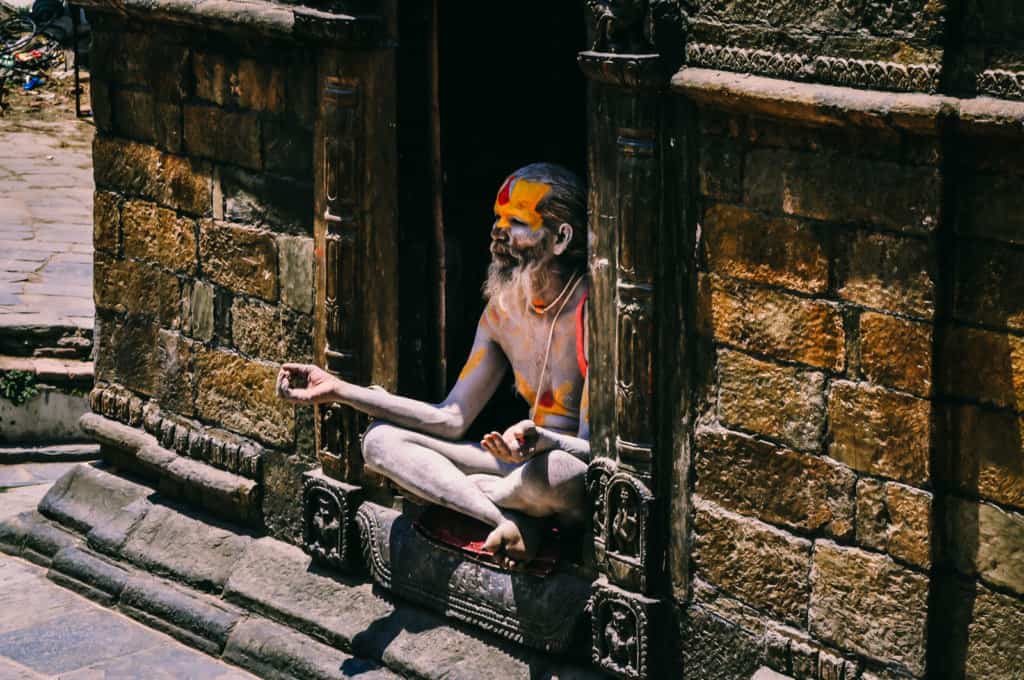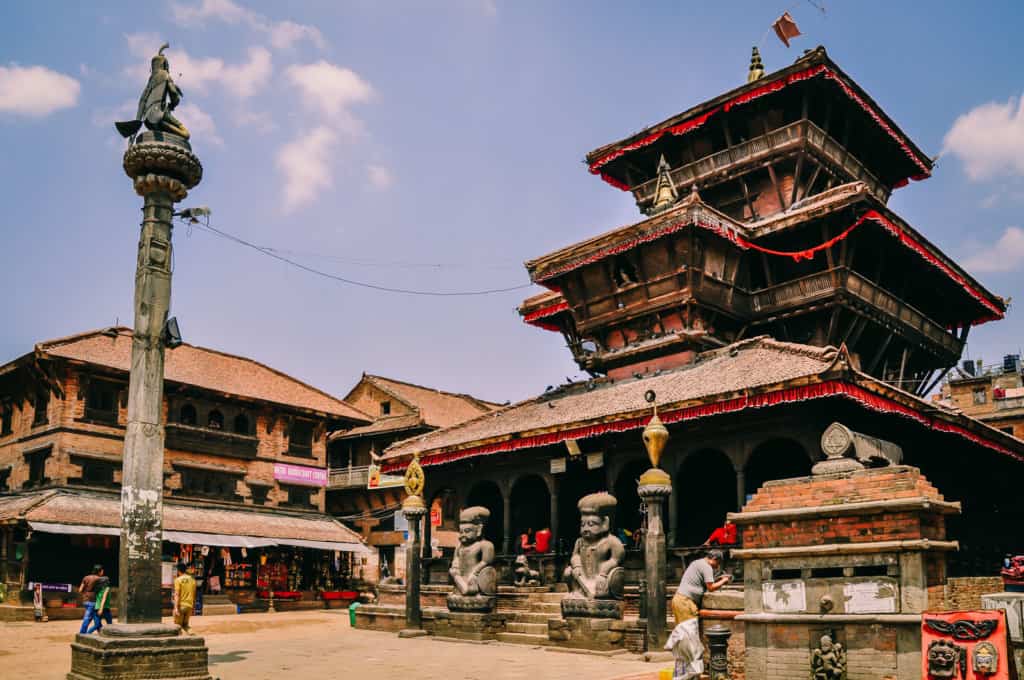Travel guide | Kathmandu | Nepal
Visit Kathmandu, the capital of Nepal
Text | Anninka Kraus
Photography | Tobias Kraus

Nepal
I always thought of unspoilt valleys, snow-capped mountains, friendly Nepalese people, and for some reason yaks when I thought of Nepal. My expectations were perhaps a little naïve, because Kathmandu is so much more than that! It is equal parts miserable, memorable, and fascinating.
The capital of Nepal, stands at an elevation of 1,400 metres in the Himalayan foothills in central Nepal, wedged between China and India, and counts as the gateway to the Nepalese Himalayan mountains. It has as an urban population of 1.5 million, and is the centre of Nepalese history, art, culture, and economy, with a multiethnic, predominantly Hindu and Buddhist population. The language spoken in Nepal is Nepalis but English is widely understood.
We booked our porter-guide for our upcoming Annapurna circuit trek through a local travel agency. Harka, it’s manager, a Kathmandu native, felt the Chinese were going their best to throw Nepal into turmoil. He felt his home city had become unliveable. I don’t know enough about the political situation, but I can account for the fact that whatever waste disposal system they do have really isn’t working.
Rubbish was piled up in pungent, colourful heaps at every corner, the riverbanks were lost from sight, covered in thick layers of trash, and the river consisted of a tragically small trickle of polluted water.
To say the city is overwhelming is putting it mildly. It is pure sensory overload, and oftentimes miserable in its constant exposure to chaos, sickness and poverty. I watched a beggar, his limbs deformed by leprosy, cowering in the rubble of a derelict building, while street kids rummaged through the mountains of rubbish at his feet. Traffic choked the metropolis in exhaust fumes, blaring horns, and dust clouds that never seemed to settle.
Irritated cows turned in circles on their continuous but fruitless search for green grass. And at a major intersection, a police officer tried to regulate traffic, wildly waving his arms around at the hundreds of rickety, worn-out cars hurtling towards him, until I saw him give up, throw his arms in the air one last time, and leave the chaos to itself. It was bedlam!
I honestly had trouble picturing the pretty town that Kathmandu, I have been told, once was. I found it unsettling at first, and when the feeling wouldn’t leave we fled to the sanctuary of our hotel, a haven of calm tidiness, filled with hammocks and loungers in a garden full of pretty flowers. We sought more normalcy, in nearby Thamel, a reasonably clean tourist area, with nice restaurants, bakeries, and cafes.
My normalcy admittedly, and one that likely doesn’t extend to a lot of the locals’ daily hardships, in a country where the GDP per capita in 2010 was US$689 (World Bank; compared to US: US$52,787) and a quarter of the population lives on less than US$1.25 a day.
There is a strong dichotomy that underlies this city. There are delightful, colourful pyramids of artfully arranged shining, succulent fruit in carts but they lean against the backdrop of decrepit homes.
There is a joyful, spiritual intensity firmly embedded in Nepalese everyday life and its people radiate an exhilarating energy but this contrasts starkly against the exhaustion of inescapable poverty and corruption. I cut to the bone.
We hired a local guide and visited Swoyambhu, Patan and Kathmandu Durbar Square, Pashupatinath Temple, Bhaktapur, and Boudhanath.
jump ahead.











Swoyambhu
The stupa (a dome-shaped Buddhist shrine) is the most striking feature of this temple complex. The complex is located westward of the city centre, on a hill, far above the squalor of the city, and offers sweeping views of Kathmandu peeking through a perpetual layer of dust. There was a devout yet unobtrusive ambience at this sacred Buddhist pilgrimage sight with stern looking Buddha eyes painted on the stupa, several smaller shrines and temples, traditional religious music wafting through the complex from surrounding souvenir shops, and colourful prayer flags flapped in the wind.
Trusting monkeys showed off by unwrapping candy. We were told they are holy monkeys transformed from the head lice of Manjusree Bodhisattva, who in Buddhism represents the embodiment of wisdom and raised the hill on which the temple complex stands. I was apprehensive that some of the original lice hadn’t made the transformation and took great care to stay away from these fleabags.


Patan and Kathmandu Durbar Square
Durbar Square is a generic name used to describe beautiful squares and buildings opposite ancient royal palaces in Nepal. In the Kathmandu valley there are three Durbar Squares, all of them protected UNESCO World Heritage Sites.
The Patan Durbar Square, a 30-minute ride south of Thamel, forms the centre of a town called Lalitpur. It has a royal quarter with multi-storied structures showing lavish adornments, protruding roofs, and patios, and these in and of themselves are reason enough to visit Kathmandu. Some of the elaborate woodcarvings on temples and palaces were explicitly erotic and we were told intended to incentivise an increase in the population. I asked our guide to please repeat what he just said, but apparently the problems of Kathmandu were indeed very different once.
The wooden window frames were gorgeous pieces of elaborately decorated art, but I wondered how dark and gloomy it must be in the rooms inside, as scarcely any light fell through the tiny squares. On a beautiful walk through the royal quarter we were strangely enough surprised to see that even here, the chaos of life in Kathmandu persisted. Bicycle rickshaws relentlessly hooted their self-made horns, protesters blared their discontent through megaphones, tour guides tried to outdo each other in volume, and motorbikes weaved through the tourist crowds.
The chaotic bustle reminded me of a visit to a fair and a young man actually sold devilish pink candy floss amidst a vast pigeon population. When I commented on the large number of birds inhabiting the square, our guide explained that pigeons are sacred in Nepal and cannot be reduced by any means. Neither could the cows that were miserably tap dancing in circles be moved to outside of the city centre. They are sacred also, yet somehow didn’t seem to appreciate their divine status as they dreamed of green grass while listlessly scouring the dust. Even more surprising to me than cows on a public square were the public watering places where people came to fetch water (as running water rarely exists in homes), wash their hair, brush their teeth, and rinse dishes.


Pashupatinath Temple
This is one of the most significant Hindu temples dedicated to the deity Shiva, and part of a large pilgrimage site only partially accessible to non-Hindus. We walked past an armada of beggars asking for alms in heart wrenching, pitiful cries, towards the river Bagmati, a small dirty stream running through the site and lined by smouldering public cremation sites. We watched two corpses being carried to these sites, accompanied by the constant piercing wail of their relatives. The corpses were placed on a pile of firewood and lit.
In my sheltered existence, I am seldom confronted with death and I shied away from this visible, public display. Yet I had to watch in awe as the relatives stood around the burning corpses watching and chatting. I think that they perhaps displayed a healthier attitude towards death than the one I have adopted; mine consisting mainly of pretending it doesn’t exist.
The Sadhu, holy men who have renounced the worldly life, were a less gruesome sight and attracted a lot of attention from tourists due to their matted hair and flamboyant body painting.


Bhaktapur
Bhaktapur is an independent royal city, the smallest of three in the Kathmandu valley, but its boundaries blend seamlessly with those of Kathmandu. The only thing letting you know that you’ve crossed city borders is the US$15 entry fee, money that goes towards preservation of the hundreds of magnificent temples, fountains, courtyards, and wells. We strolled through cool and quiet alleyways, an impossible find in the rest of Kathmandu. Children ran around barefoot, elderly women filled jugs with water from a well, and the aroma of freshly prepared Dal Bhat lingered in the air.
Motorbikes and cars were scarce in these alleyways, which was perhaps not surprising as they were narrow enough that even a Smart car would have struggled to manoeuvre. Bhaktapur was once situated along the former trade route to Tibet and its prosperity is still visible in the marvellous wood reliefs that adorn many homes. Towards the end of our walk we stopped by a shop offering singing bowls for healing and meditation purposes. I was sceptical of their healing power but actively considered one of the pretty bronze bowls as a flower vase. My favourite moment however, was watching Tobi perch uncomfortably in said shop on a small stool, his eyes closed, while the owner banged a padded mallet against a singing bowl on Tobi’s head.


Boudhanath
This great white stupa, one of the oldest worldwide, represents one of the holiest Buddhist sites in Kathmandu. Religious singsong, prayer mills, and hundreds of colourful prayer flags followed us on our clockwise circuit, the wary all-seeing eyes of Buddha tracking our every step. Its golden spire gleamed splendidly in the midday sun and overlooked the whole neighbourhood.
Nobody seems sure what lies hidden inside the Boudhanath stupa, but according to legend it is a lotus flower; a rather dehydrated lotus flower, I imagine. The atmosphere was devout yet peaceful, and delightfully unpretentious as monks, pilgrims, and tourists pursued and briefly shared their very different daily lives.

